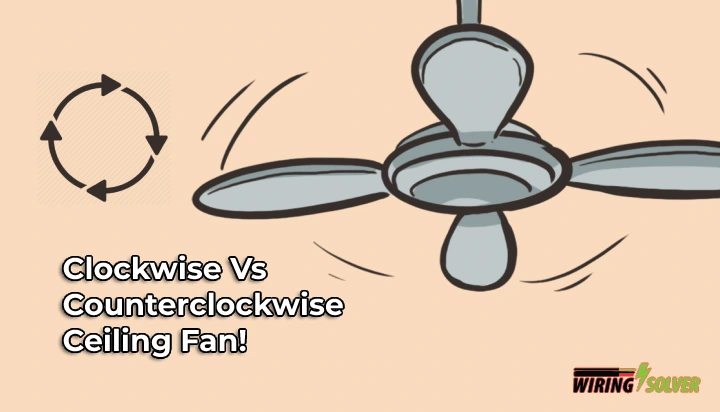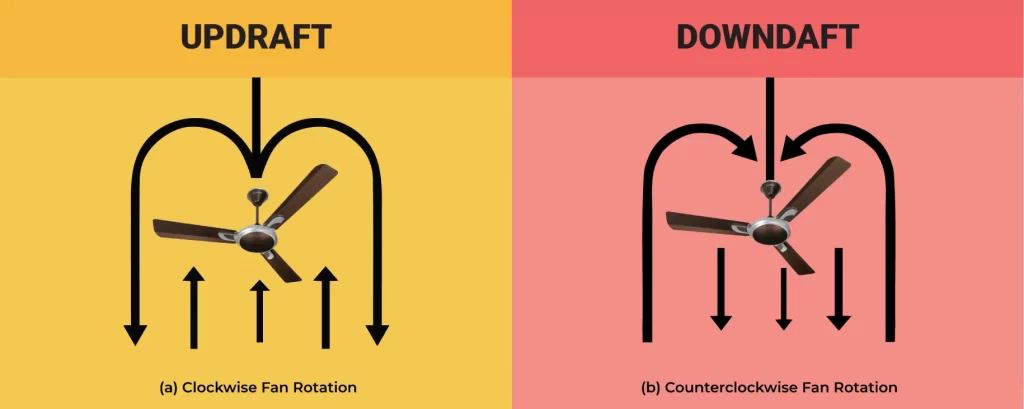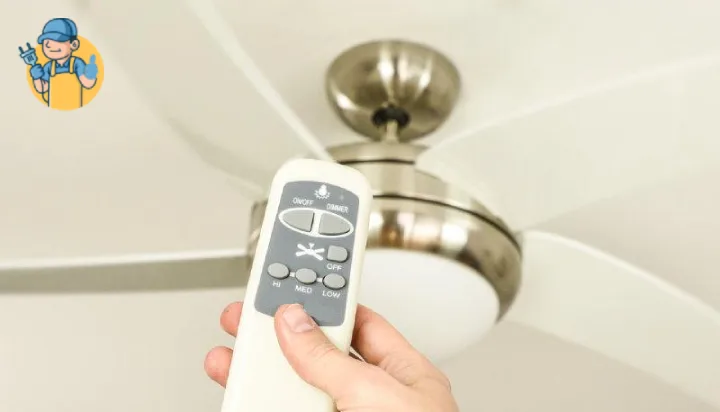Ceiling fans are a vital piece of home decor that can help cool your home during the summer months. But did you know that the direction of the fan can have an impact on the cooling effect?
While a clockwise fan direction is always used in the winter to pull the warm air up and keep the cool air below, a counterclockwise fan direction is always used in the summer to push cold air down and keep the room cool.
This article will discuss some of the key differences between clockwise and counterclockwise fan directions so that you can choose the correct one for yourself.

How Can I Identify My Fan Direction?
Fan direction can easily be identified by checking the rotation of the fan blades, or feeling the direction of airflow.
To choose a fan direction for a specific season, you must know which way is clockwise on a ceiling fan and which way is counterclockwise.
- Turn on the fan,
- Stand directly below the fan.
- Carefully watch which way the blades of the fan speed.
- If they rotate from the top to the left, then down right and back up, they are moving in a counterclockwise direction (Fig-1. b).
- If they rotate from the top to the right, then down left and back up, they are moving in a clockwise direction (Fig-1. a).

It is very important to correctly identify your fan direction to properly prepare for each season.
A question that might pop up is, are ceiling fans dangerous? If you take proper maintenance, they should be completely safe.
Differences Between Clockwise and Counterclockwise Fan Rotation?
There are several key differences between clockwise and counterclockwise fan directions apart from the direction of the airflow. Time to take a look.
Clockwise VS Counterclockwise Fan
Feature | Clockwise | Counterclockwise |
Direction of Airflow | Upward | Downward |
Preference for Summer | Not preferred | Preferred |
Preference for Winter | Preferred | Not Preferred |
Impact on Air-Conditioning | Negative impact | Positive impact |
Impact on Heating | Positive impact | Negative impact |
Impact on Electricity Bills | Helps save money in winter. | Helps save money in the summer. |
Directional Switch Position | Up for vertical, right for horizontal switches. | Down for vertical, left for horizontal switches. |
Clockwise VS Counterclockwise Fan: Which Fan Direction Should I Choose?
These key factors contribute to the decision-making strategy of whether you should choose the clockwise direction for your fan blades or the counterclockwise one.
The direction of Airflow:
If you want the air to flow downward, you should choose the counterclockwise fan direction.
It helps to cool the room down. Hence it is chosen for the summer season. Whereas for upward airflow, you have to choose the clockwise fan direction.
Preference for Summer:
Counterclockwise is the preferred ceiling fan direction for summer as it helps keep the room cooler.
It pushes the cool air down to create a perspiration effect that helps cool you down. It also helps distribute the cool air evenly in the entire room.
Preference for Winter:
Clockwise fan direction is preferred for winter. It helps pull the cool air up, and in turn keeps the warm air down, which keeps the room warm and helps remove strain on the heating system of your house.
Impact on Air-Conditioning:
Counterclockwise fan direction has a positive impact on the air-conditioning of a room because it helps distribute the cool air evenly in the room. While the clockwise direction makes it harder for the room to cool down.
Impact on Heating:
Clockwise fan direction sucks up the cool air and keeps the warm air below, helping the heating system in a positive manner. The counterclockwise direction will create a hindrance in the heating system.
Impact on Electricity Bills:
As a clockwise direction has a positive impact on heating, it helps save bills in the winter. Whereas counterclockwise fan direction helps save bills in the summer.
Directional Switch Position:
Each fan has a directional switch. Up/ right is for clockwise while down/left is for counterclockwise fan direction.
A common question that might pop up in your head is, “Is the fan switched up or down for summer?”. It should be down for summer and up for winter.
You might also wonder how to change ceiling fan direction without a switch. It’ll take a bit of work.
Why It Is Necessary to Switch Ceiling Fan Direction?
Switching the direction of a ceiling fan is necessary in order to optimize its performance and efficiency.
Depending on the season and the temperature in the room, a ceiling fan should be set to rotate in either a clockwise or counterclockwise direction.
In the summer, a ceiling fan should be set to rotate in a counterclockwise direction. This creates a cool breeze and helps to lower the temperature in the room.
The cool air from the fan mixes with the warmer air in the room, creating a circulating effect that helps to lower the overall temperature.
In the winter, a ceiling fan should be set to rotate in a clockwise direction. This pushes the warm air that rises to the ceiling back down into the room, helping to heat it.
The warm air from the fan mixes with the cooler air in the room, creating a circulating effect that helps to heat the overall space.
Switching the direction of a ceiling fan is an easy and effective way to regulate the temperature in a room, and can help to improve the overall comfort and energy efficiency of a space.
It is important to switch the direction of the fan based on the season and the temperature in the room to optimize its performance and efficiency.
Summary
In conclusion, understanding the difference between clockwise and counterclockwise fan rotation is key to cooling your home efficiently. Depending on the season and your needs, one direction may be preferable to the other.
By taking the time to understand the differences between clockwise and counterclockwise fan rotation, you can ensure that your ceiling fan is operating correctly and efficiently.






